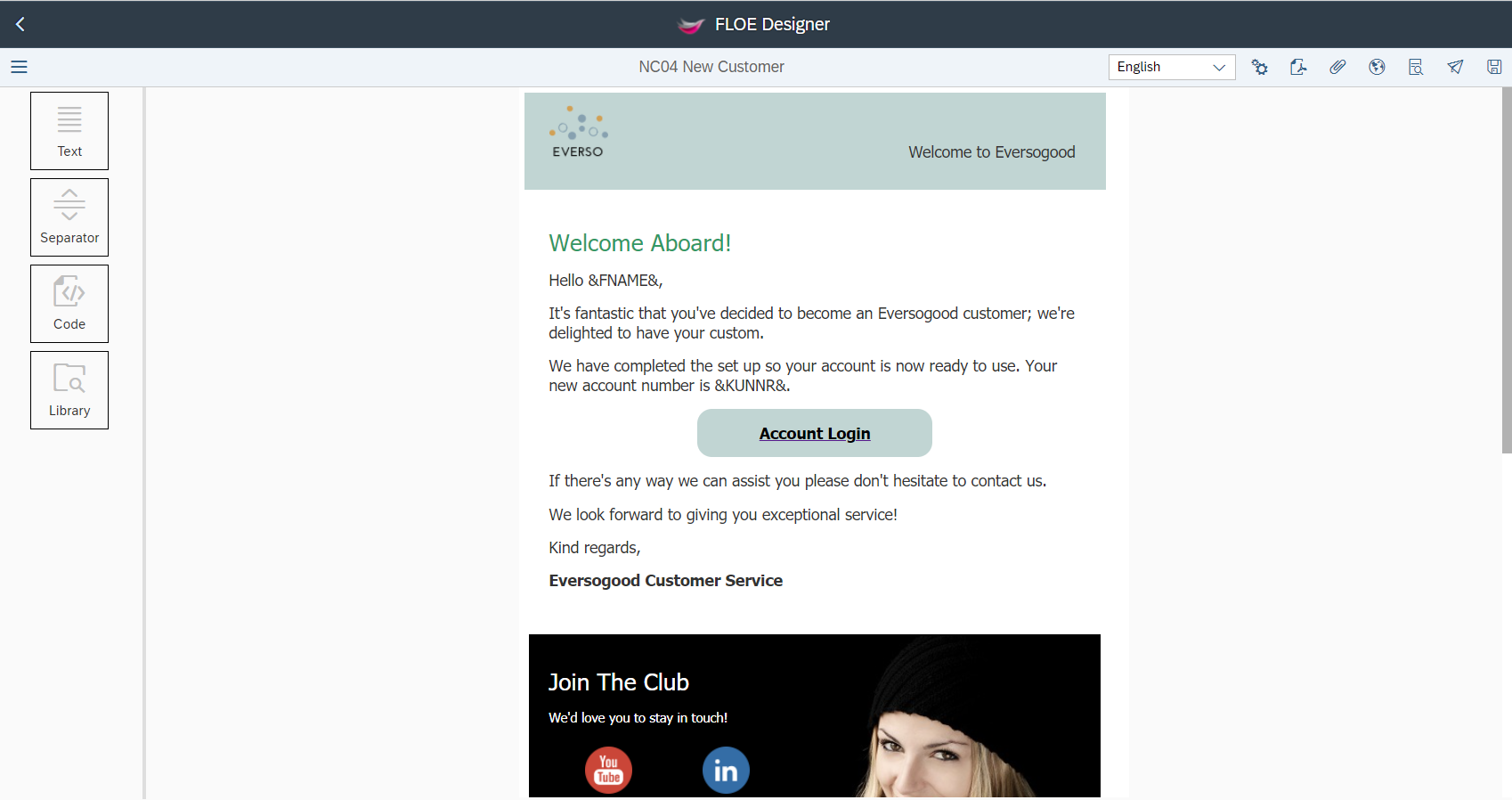
SAP Business Communication
There are a number of different approaches to generate business communication from SAP and your company may use some or all of them:
- PDF document output. Typically generated when a business document like sales order, purchase order or invoice is created. Normally sent as an email attachment.
- PDF letter. In many cases these are generated in Word, or outside SAP, using SAP data for mail-merge, or manually typed depending on the scenario.
- Web portal. Generated information, for example, showing customer information, alerts, order statuses and VAT receipts in HTML or PDF format.
- Email. Sometimes a plain container for a PDF attachment, sometimes with rich content. Used for process notifications, document output and mass communication scenarios like newsletters.
- SMS. Typically used for notifications such as delivery times and one-time passcodes.
Many organisations will use most or all of these approaches, and many will be handled outside SAP. However, in most of the examples above, the trigger point to send that communication comes from the SAP process, so some degree of integration is required to the SAP system.
IT Skillset
Managing these approaches inside SAP is possible, but complex, and requires a large mix of technologies. These might include:
- ABAP;
- SAPScript;
- Smartforms;
- SAP Interactive Forms by Adobe;
- HTML;
- CSS;
- SAPUI5;
- JavaScript.
Across all those approaches, the maintenance of the communication templates necessarily lies in the domain of the IT department. Any changes require technical skills.
The result is:
- A slow pace of change.
Every request for a change needs to be evaluated, costed, planned, executed and tested by IT, which is often outsourced.
- Static templates.
Don’t touch it if it’s not broken. Once the template is complete, it may not change for years, so it is not likely to include news or timely marketing information.
- Increasingly old-fashioned feel.
Consumers use the web for everything, and expect a highly visual experience. Meanwhile some companies are still pumping out PDF attachments for emails.
In fact, this represents a hole in the digital transformation story: There are many user touch-points that remain to be transformed!
Floe: A universal design tool
Floe is an SAP Add-on for business communication. Floe provides a simple design tool for every type of SAP communication.

We believe that SAP generates too many PDF documents, but there are some scenarios where PDFs are absolutely necessary, for example, for export documentation such as quality certificates and customs invoices. Customers often need a receipt for tax purposes, so PDFs are useful for that purpose. PDFs are also useful for documents like payslips and tax forms for employees where a password can be added to protect the data.
Any Floe template can be rendered as a PDF document.
Floe originated as an HTML email tool. The Floe templates can be used as the body of an email. In this way, plain emails with PDF attachments can be replaced by dynamic, graphic-rich emails, with no need for an attachment.
Complex output requirements, such as nested tables and repeating content are handled easily. Dynamic rules for including content fragments are handled in the designer without the need for any code.
Letter
Business letters, rendered as PDFs with an email attachment can be built in the Floe designer. Simple use one template for the letter and a separate template for the email, and set one as an attachment to the other.
SMS
Floe templates can be used for text messages, with easy addition of SAP variable data.
Web Portal (or chatbot)
When a document is requested from a web portal, this can be generated on demand by Floe, in either HTML format or PDF format, to be displayed directly within the portal or downloaded. In either case the template is exactly the same and the calling API requests the type of document.
Template Maintenance with Floe
There are two enormous advantages of using Floe as a unified template designer:
[1] Skillset collapse
The call to trigger Floe needs to be added in ABAP from the calling program, workflow or output program. Additional business logic can be added in Floe’s user-exit framework, to manipulate data or make additional database selections. But this is the only technical skill required.
There is no need for expertise in SAPScript, Smartforms, Adobe LiveCycle Designer, HTML, CSS, SAPUI5 or JavaScript.
This means that all your SAP communication requirements can be delivered easily with simple ABAP skills.
[2] Business ownership
The Floe Designer is made for business users, so they can take ownership of the business communication content. When changes are required, there is no need to wait for IT, the key business users can make the change, test and implement.
Floe templates can optionally be handled as master data, so that they can be changed directly in the production system. Alternatively, changes can be restricted to the development system and moved using transport requests through the SAP landscape.
What this means
Floe enables you to do more in SAP; i.e. to do more inside the SAP system rather than rely on external systems. This means your get more from your investment in SAP.
It also enables you to deliver a consistent communication strategy across multiple media. It enables you to extend your digital transformation activities to more user touch-points.
With Floe, you can deliver a fast pace of change, dynamic templates with relevant, timely and tailored content, and a fresh, modern feel to all your business communication from SAP.






Leave A Comment
You must be logged in to post a comment.